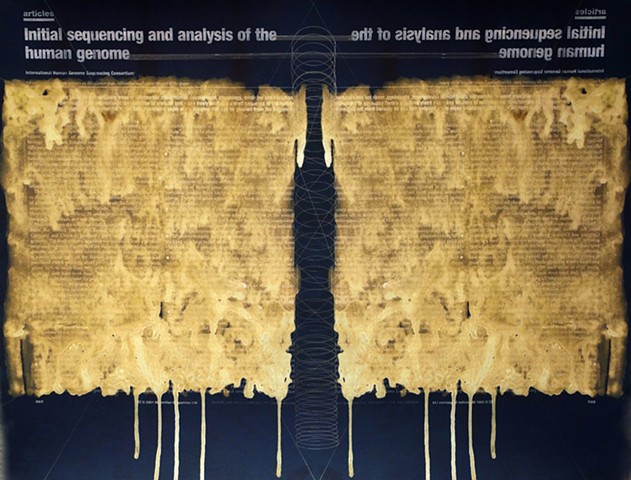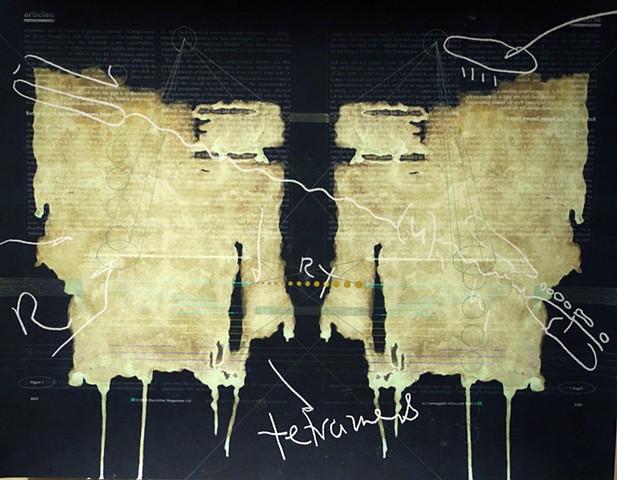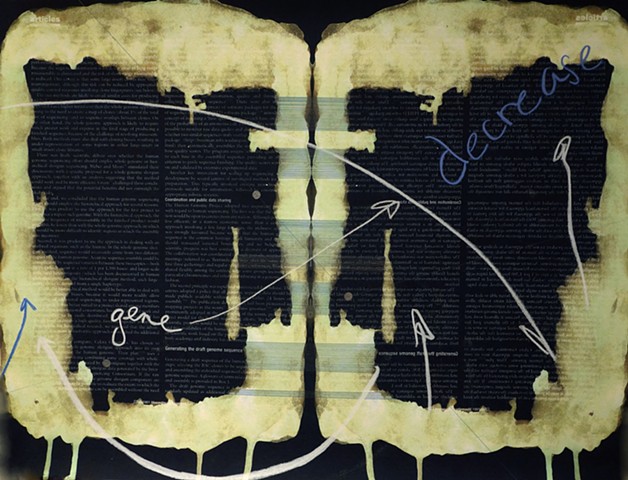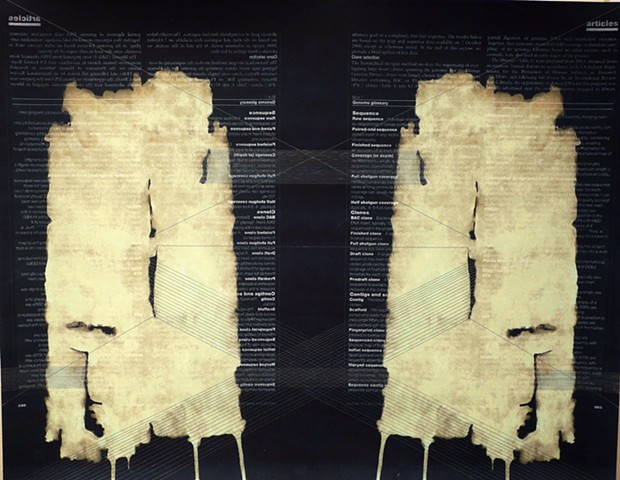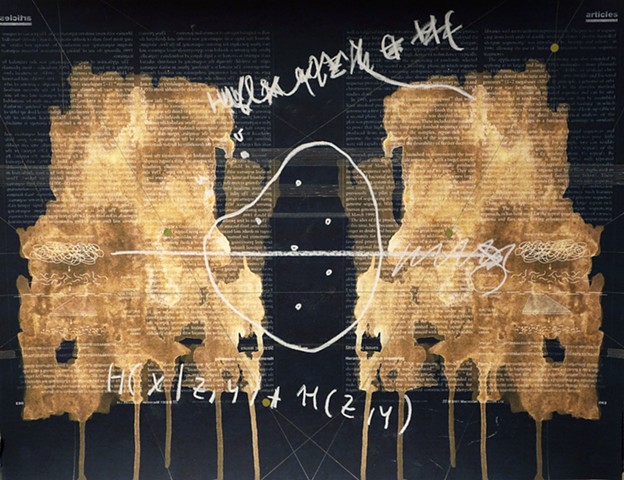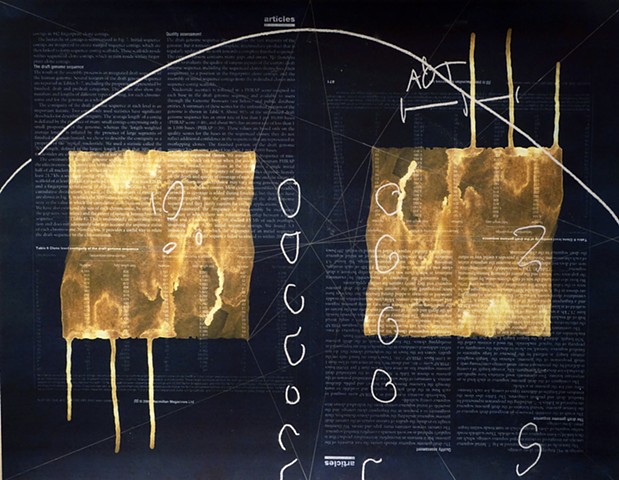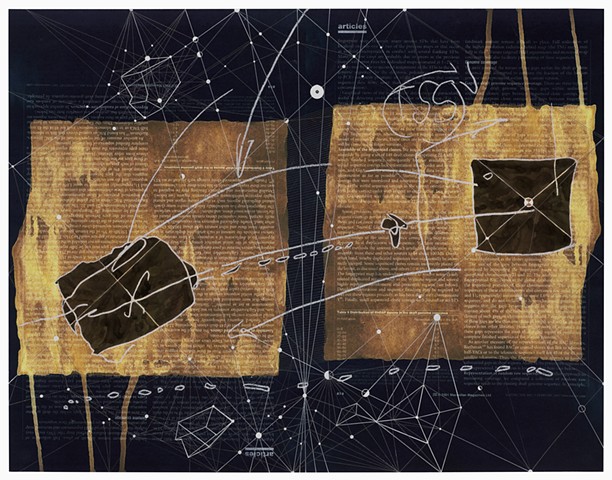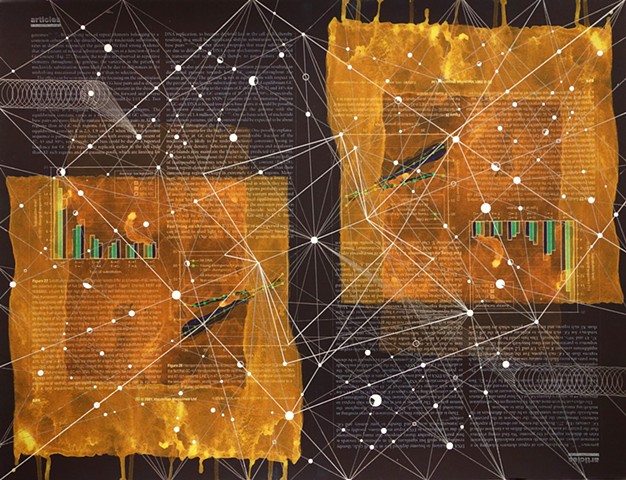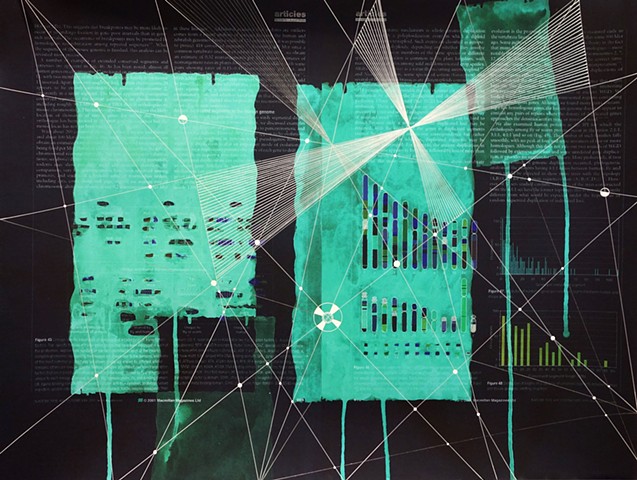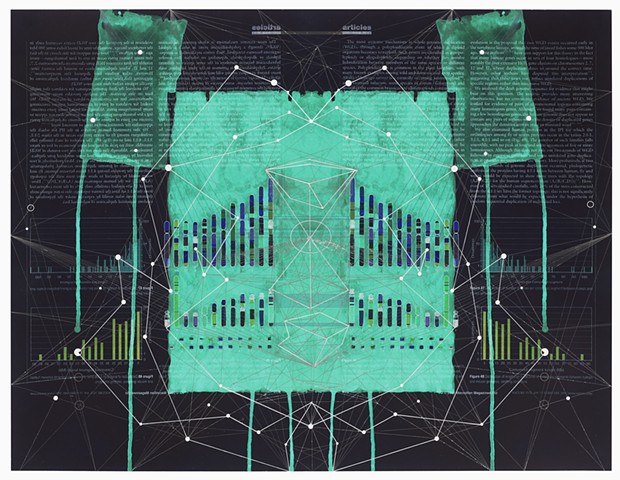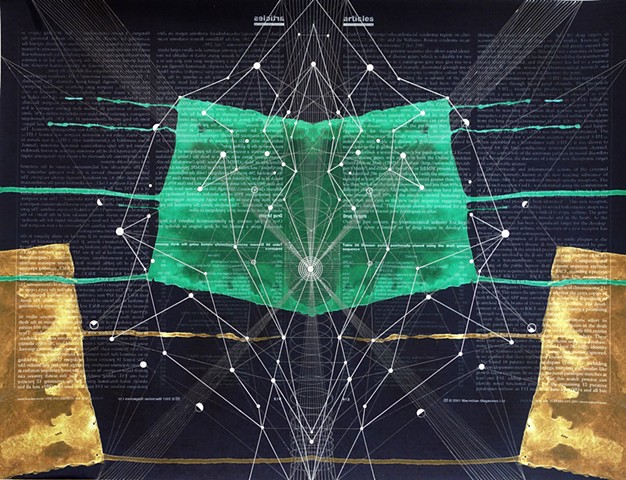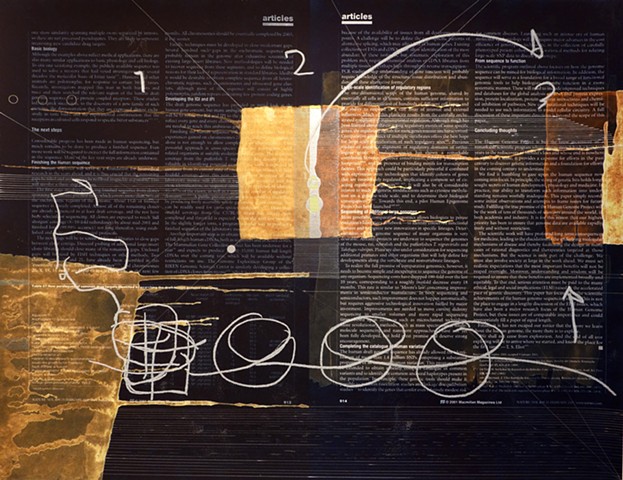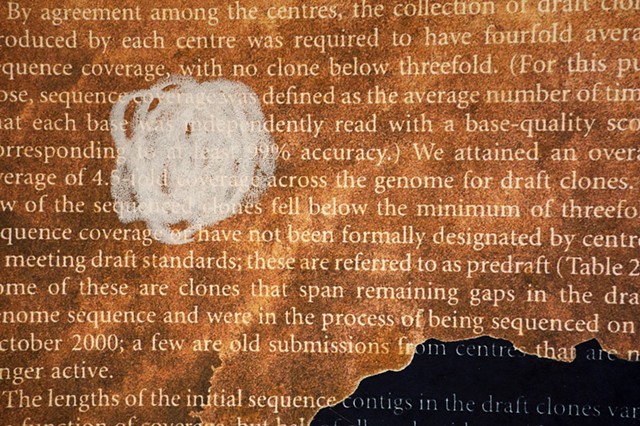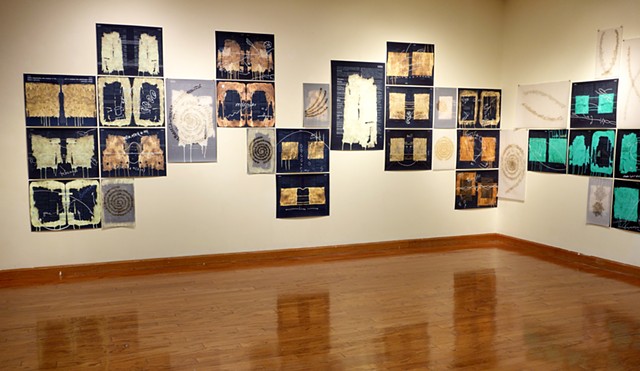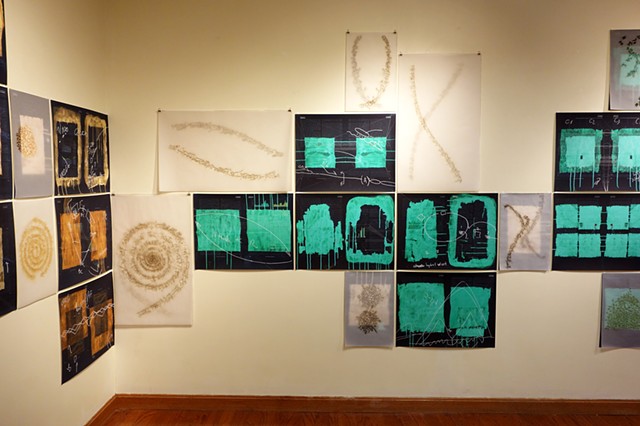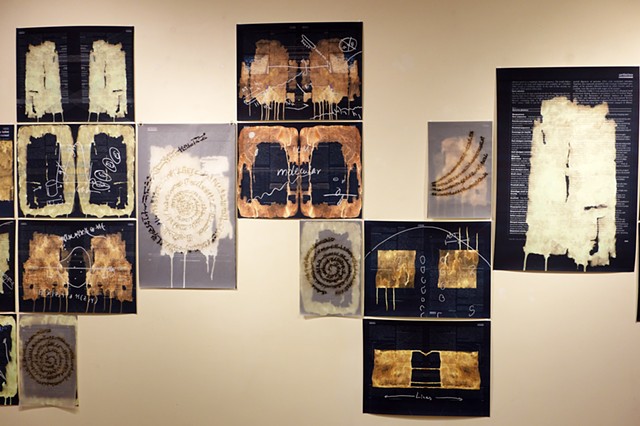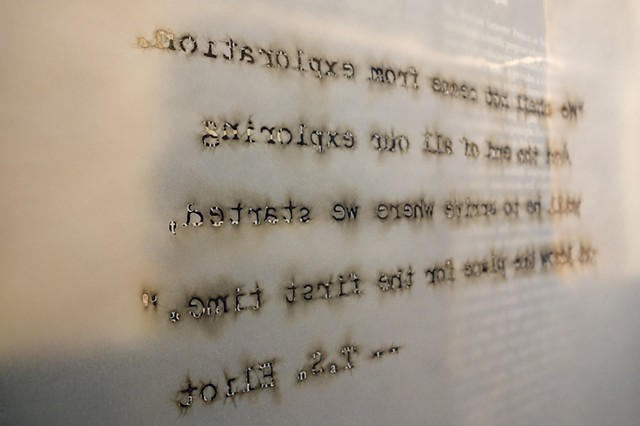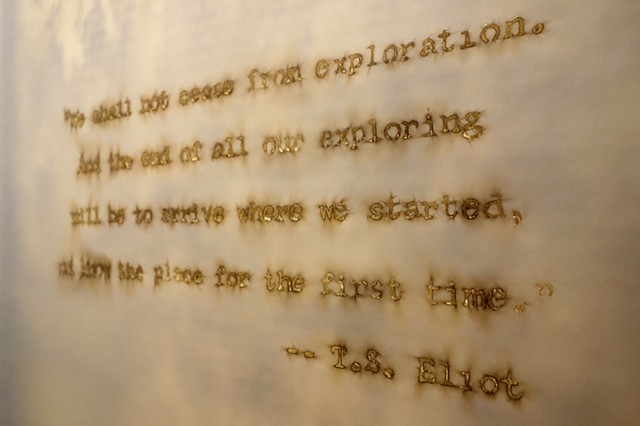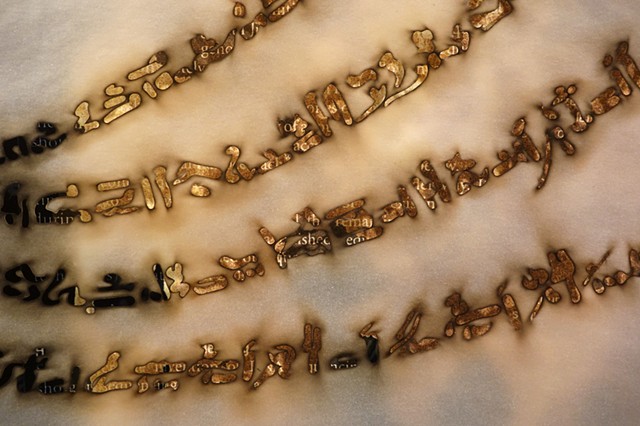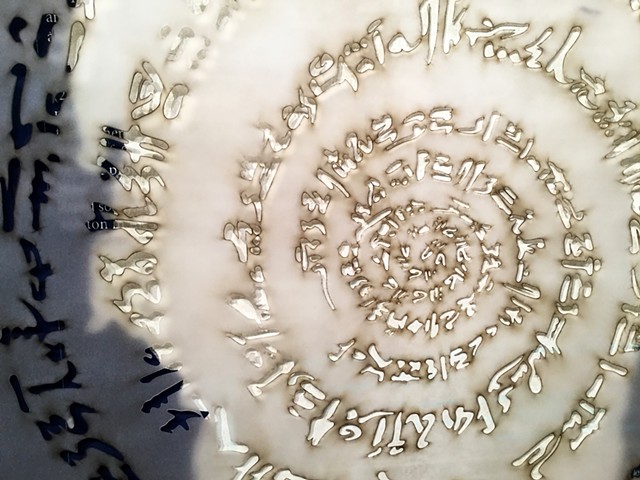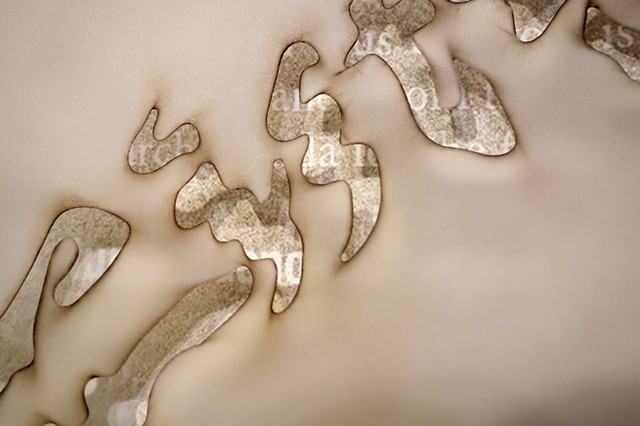Sequencing stories
Sequencing stories
2016 - 2019
Mixed media drawing on archival pigment print on Sunset Hot Press Rag paper and laser cut on vellum.
Installation size variable.
Individual sheets:
Mixed media drawing on archival pigment print on Sunset Hot Press Rag papers, 17"x 22" or 30"x 18"
Archival pigment print with laser cut on vellum, 17"x 11"
Sequencing stories weave stories from three different times in medical and scientific history—Ancient (The Edwin Smith Papyrus from ancient Egypt, 1,600 BCE,) Contemporary Past (The Human Genome Project, 1990–2003,) and the Present (scientific writings from the whiteboards at the Broad Institute of MIT and Harvard, 2016.)
Ancient: The Edwin Smith Papyrus is an Egyptian medical papyrus from 1,600 BCE that included prognosis for the first time in recorded history. On this papyrus, rational science is not seen as being at odds with magic, and on its verso, magic spells are recorded as legitimate medical treatments.
Contemporary Past: The Human Genome Project, 1990–2003.
The Initial sequencing and analysis of the human genome was published in Nature in 2001. The Human Genome Project changed the way we do science forever.
Present: Traced scientific writings from the whiteboards, 2016
Scientific notations and writings on the whiteboards at the Broad Institute were traced by hand. These traced notations represent ideas and experiments by the Broad Institute’s scientists.
Sequencing the past to the future
Scholars posit that in ancient Egypt, the same content was transcribed many times over a period of 200–300 years. This means that the methods of diagnosing and treating illness didn’t change significantly during those centuries. Only fifteen years after the sequencing of the human genome was completed, we’re talking about precision medicine and using CRISPR, a genome editing technology. During the past few decades, science, medicine, and technology have been moving at an exponential speed.
Science is built on numerous cycles of exploration. Each discovery is not the end of a journey but presents us with a new set of questions, and brings us to forge new pathways. Pulling different knowledges and ideas from the past and the present, I explore topics such as progress, knowledge, belief, discovery, and the cycle of exploration. I combined layers of information (ancient papyrus and the paper on the Human Genome Project) to create a base image and printed them as archival pigment prints, then added more layers of information and drawings by hand.
The 2001 paper entitled The Initial sequencing and analysis of the human genome ends with a quote from T.S. Eliot’s poem, "Little Gidding."
We shall not cease from exploration
and the end of all our exploring
will be to arrive where we started
and know the place for the first time.
Special thanks to Bang Wong, Andrew Tubelli, and Mariya Kahn at the Broad Institute and FreeFall Laser for their assistance with laser cutting project, and Daisy Wong for her assistance with the installation at the Boston Arts Academy. Deep gratitude for the Broad Institute for giving me an opportunity to wander and observe around the Institute for extended periods of time. I'm grateful for many scientists and staff who welcomed me with their open arms and open minds. Special thanks to Shannon Humphrey for her tireless support on many administrative and logistical matters during my residency at the Broad Institute.
